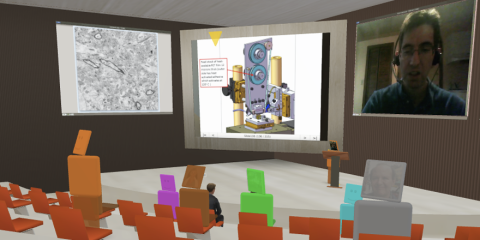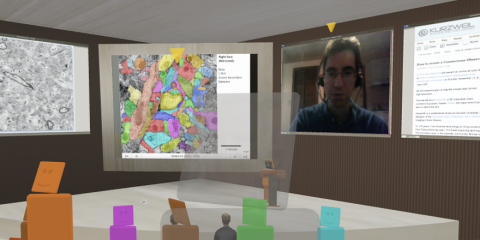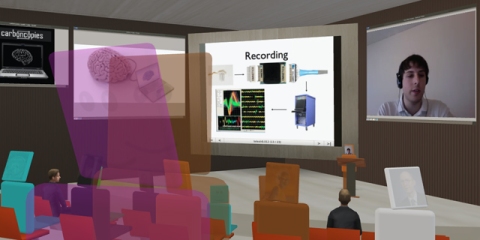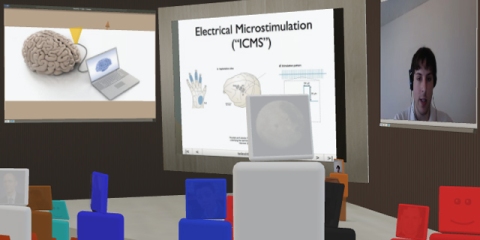
UPDATED – See write-ups and videos at:
Ken Hayworth on How to create a Connectome Observatory of the mouse brain and beyond, OpenQwaq, November 13 2011
A Connectome Observatory for nanoscale brain imaging | KurzweilAI
Sunday, November 13, 2011,
at 10am PST (1pm EST, 6pm UK, 7pm continental EU)
Talk title: How to create a Connectome Observatory of the mouse brain and beyond
Presented by: Dr. Kenneth Hayworth
Several laboratories are now using Focused Ion Beam Scanning Electron Microscopes (FIB-SEM) to image small volumes of plastic embedded brain tissue at resolutions approaching 5x5x5nm voxel size. The fact that FIBSEM can obtain such resolution is of fundamental importance since at this resolution all neuronal processes should be traceable with 100% accuracy using fully automatic algorithms. A fundamental physical limitation of the FIB ablation process is that this resolution can only be obtained for very small samples on the order of 20 microns across. To overcome this limitation I have developed a technique using a heated, oil-lubricated, ultrasonically vibrating diamond knife which can section large blocks of plastic-embedded brain tissue into 20 micron thick strips optimally sized for high-resolution FIB-SEM imaging. Crucially, this thick sectioning procedure results in such high-quality surfaces that the finest neuronal processes can be traced from strip to strip.
In this talk I will present these results as well as a detailed design for a machine automating this thick sectioning procedure on the scale of a whole mouse brain. An entire plastic-embedded mouse brain would first be sectioned on this machine into a tape containing 500 tissue slabs (each 20 microns thick). The same machine is then used to section each of these slabs into 300 tissue pillars each 15mm long and 20x20microns in cross section. These “pillar tapes” have been carefully designed to allow random access FIB-SEM imaging of any 20x20x20micron sub-volume within the mouse brain quickly and with 100% reliability.
Spreading these pillar tapes among 20 specially designed FIB-SEM machines would create a “Connectome Observatory” of the mouse brain. Similar to an astronomical observatory, individual neuroscience researchers could request time on this Connectome Observatory, and over a ten year period could use it to map out 50 separate brain regions each with a dense reconstruction of 300x300x300microns in volume and trace over 8 meters of the finest projecting axons between these 50 regions.
About the speaker: Kenneth Hayworth is currently a postdoctoral fellow at Harvard University. Hayworth is co-inventor of the Tape-to-SEM process for high-throughput volume imaging of neural circuits at the nanometer scale and he designed and built several automated machines to implement this process. Hayworth received a PhD in Neuroscience from the University of Southern California for research into how the human visual system encodes spatial relations among objects. Hayworth is a vocal advocate for brain preservation and mind uploading and a co-founder of the Brain Preservation Foundation which calls for the implementation of an emergency glutaraldehyde perfusion procedure in hospitals, and for the development of a whole brain embedding procedure which can demonstrate perfect ultrastructure preservation across an entire human brain.
OpenQwaq is one of the best 3D applications for telework, online meetings, group collaboration, and e-learning in a virtual 3D environment (v-learning). There are a limited number of seats available, please contact us if you wish to attend. Join our mailing list, our Facebook group, or our Linkedin group.









You must be logged in to post a comment.